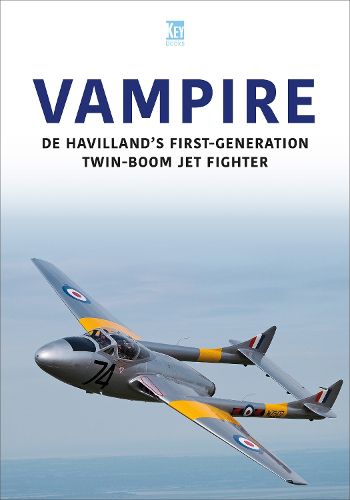Readings Newsletter
Become a Readings Member to make your shopping experience even easier.
Sign in or sign up for free!
You’re not far away from qualifying for FREE standard shipping within Australia
You’ve qualified for FREE standard shipping within Australia
The cart is loading…






Successful aircraft manufacturer de Havilland began design development of the Vampire in 1941, to assess the feasibility of jet propulsion as a means of powering fighter aircraft. Rolling off the production line too late to see action in World War Two, this jet fighter was a popular aircraft in operational squadrons. Easy to fly, maintain and build, unprecedented numbers of orders followed. The Vampire quickly found its niche as a ground-attack aircraft and remained at the forefront of RAF service until the early 1950s when it assumed an advanced training role. Alongside its development, the Sea Vampire, Venom and Sea Venom adopted specific roles for the armed services, the latter two achieving a new company designation. Many were still in service decades after they were manufactured. This new book edition of Aeroplane Icons: Vampire charts the development of de Havilland's Vampire through the design and development stages of its lifespan. 120 b/w illustrations
$9.00 standard shipping within Australia
FREE standard shipping within Australia for orders over $100.00
Express & International shipping calculated at checkout
Successful aircraft manufacturer de Havilland began design development of the Vampire in 1941, to assess the feasibility of jet propulsion as a means of powering fighter aircraft. Rolling off the production line too late to see action in World War Two, this jet fighter was a popular aircraft in operational squadrons. Easy to fly, maintain and build, unprecedented numbers of orders followed. The Vampire quickly found its niche as a ground-attack aircraft and remained at the forefront of RAF service until the early 1950s when it assumed an advanced training role. Alongside its development, the Sea Vampire, Venom and Sea Venom adopted specific roles for the armed services, the latter two achieving a new company designation. Many were still in service decades after they were manufactured. This new book edition of Aeroplane Icons: Vampire charts the development of de Havilland's Vampire through the design and development stages of its lifespan. 120 b/w illustrations